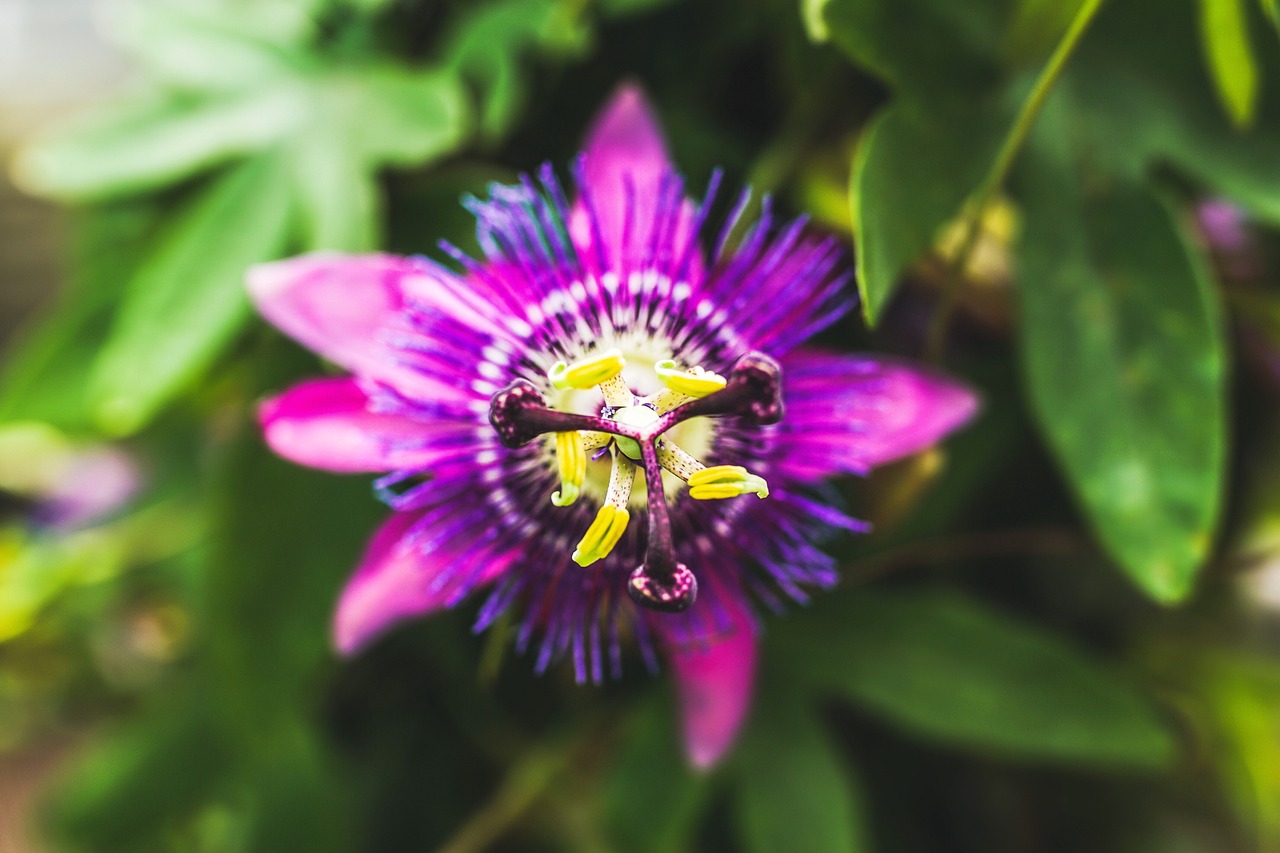How to Care for Rubber Plant. Are you a proud owner of a beautiful rubber plant but struggling to keep it healthy? Don’t worry; we’ve got you covered. In this guide, we’ll provide you with valuable tips on caring for your rubber plant, including watering, lighting, temperature, and maintenance. With the right care, your rubber plant can thrive indoors and add a touch of greenery to your home.
Key Takeaways
- Proper watering is crucial for the health of your rubber plant. Water only when the top inch of soil feels dry to the touch.
- Rubber plants thrive in bright, indirect light, so place them near a window where they can receive filtered sunlight throughout the day.
- Maintain a temperature range of 60°F to 75°F (15°C to 24°C) and avoid drafts or cold air-conditioning vents.
- Prune your rubber plant to maintain its shape and size, and fertilize it once a month during the growing season.
- Be mindful that rubber plants are toxic to pets and humans if ingested, so keep them out of reach and consider pet-safe plants if you have pets.
Understanding the Rubber Plant
Welcome to our comprehensive rubber plant care guide! Before we delve into the care instructions, let’s first get to know the rubber plant. The rubber plant, scientifically known as Ficus elastica, is a popular indoor plant that is native to Southeast Asia.
With glossy, large leaves, rubber plants can grow up to 100 feet tall in their natural habitat. However, as a houseplant, they usually grow up to 6-10 feet in height. Not only do they add a touch of green to any room, but they are also known for their air-purifying qualities.
Now that you have a basic understanding of the rubber plant, let’s move onto the care instructions to keep your plant healthy and thriving.
Tips for Caring for Your Rubber Plant
Proper care and maintenance are essential for keeping your rubber plant healthy and thriving. Follow these tips to ensure your plant gets the love and attention it deserves:
- Watering: Water your rubber plant when the top inch of soil feels dry. Avoid overwatering, which can lead to root rot. Use well-draining soil and ensure proper drainage in the pot.
- Lighting: Place your rubber plant in bright, indirect light. Avoid direct sunlight as it can scorch the leaves. If necessary, use artificial grow lights to provide sufficient light.
- Temperature: Rubber plants prefer temperatures between 60°F and 75°F. Keep your plant away from cold drafts and air-conditioning vents.
- Humidity: Rubber plants enjoy higher humidity levels, so consider using a humidifier or placing a tray of water near the plant.
- Fertilizing: Fertilize your rubber plant once a month during the growing season with a balanced, water-soluble fertilizer diluted to half strength. Avoid fertilizing during the dormant winter period.
- Pruning: Trim off yellow or damaged leaves to maintain the plant’s shape and promote bushier growth.
- Pest control: Regularly inspect your plant for pests, such as mealybugs or spider mites, and treat them with insecticidal soap or neem oil.
- Repotting: Repot your rubber plant every 2 to 3 years to prevent root-bound growth. Use a pot one size larger and well-draining soil.
- Propagation: Expand your rubber plant collection by propagating stem cuttings in water or moist soil.
By following these tips, you can ensure your rubber plant stays healthy and vibrant for years to come.
Providing Adequate Light
When it comes to rubber plant care indoor, ensuring proper lighting is essential. Rubber plants thrive in bright, indirect light. Placing your rubber plant near a window where it can receive filtered sunlight throughout the day is ideal. However, it’s crucial to avoid placing the plant in direct sunlight as this can scorch the leaves.
If your home doesn’t have a well-lit area, consider using artificial grow lights to provide the necessary light for your rubber plant. Fluorescent lights are perfect because they emit the right spectrum of light for the plant. To ensure even growth, rotate the plant regularly so that all sides receive equal exposure to light.
Maintaining the Right Temperature
Proper temperature is essential for the health of your rubber plant. Rubber plants prefer temperatures between 60°F and 75°F (15°C to 24°C). They can tolerate slightly cooler temperatures, but it’s important to avoid drastic temperature fluctuations that can shock the plant. Keep your rubber plant away from drafts and cold air-conditioning vents, which can cause stress and affect growth.
If the temperature drops below 50°F (10°C), your rubber plant may suffer damage or even die. During winter, protect the plant from cold drafts and provide extra warmth if needed. You can also use a humidifier in the room to create a comfortable environment for your plant.
Humidity Requirements
As rubber plants are commonly used as indoor plants, it’s important to understand their humidity requirements. Rubber plants can adapt to average household humidity, but they do enjoy higher humidity levels.
If you’re keeping your rubber plant indoors, it’s recommended to increase the humidity levels by using a humidifier or placing a tray of water near the plant to increase humidity. Misting the leaves occasionally can also help provide some moisture, especially if you live in a dry climate.
Avoid placing your rubber plant near air-conditioning vents or heaters, as these can cause the air to dry out and affect the plant’s growth.
By maintaining a balanced indoor environment that is neither too dry nor too humid, you can ensure your rubber plant thrives indoors.
Fertilizing Your Rubber Plant
Proper fertilization is key to the health and growth of your rubber plant. Here are some tips for caring for your rubber plant:
- Fertilize your rubber plant once a month during the growing season (spring and summer).
- Use a balanced, water-soluble fertilizer diluted to half the recommended strength.
- Avoid fertilizing during winter when the plant is in a dormant phase.
If you notice signs of over-fertilization, such as burned leaves or stunted growth, reduce the frequency of fertilizing or dilute the fertilizer even further.
Remember to always follow the instructions on the fertilizer package and use caution when handling chemicals. With proper fertilization, your rubber plant will continue to thrive and add beauty to your indoor space.
Pruning and Shaping
Pruning is an essential part of rubber plant care and maintenance. It helps to maintain the shape and size of your plant, remove any damaged or yellowing leaves, and encourage bushier growth.
To prune your rubber plant:
- Use clean pruning shears.
- Identify the stem or leaves you want to trim.
- Make a clean cut just above a leaf node.
- If trimming leaves, make sure to leave at least two leaves on the stem.
You can also prune your rubber plant to encourage branching. To do this, trim the stem just above a leaf node where you want new growth to appear.
Remember to keep your rubber plant shaped and pruned to avoid letting it become too large and unwieldy.
Dealing with Common Pests
While rubber plants are generally easy to care for, they can still be susceptible to pest infestations. The most common pests that affect rubber plants include aphids, mealybugs, and spider mites.
Aphids: These small insects can be found on the undersides of leaves and can cause stunted growth and distorted leaves. To get rid of aphids, wipe the leaves with a damp cloth to remove them or use insecticidal soap or neem oil spray.
Mealybugs: These white, cottony insects can also be found on the undersides of leaves and can cause yellowing leaves and stunted growth. To get rid of mealybugs, use a cotton swab dipped in rubbing alcohol to remove them or use insecticidal soap or neem oil.
Spider Mites: These tiny insects can be found on the undersides of leaves and can cause yellowing leaves and webbing. To get rid of spider mites, wipe the leaves with a damp cloth or use insecticidal soap or neem oil spray.
Regularly inspect your rubber plant for any signs of pests, and if you spot them, take action immediately to prevent them from spreading. Wiping the leaves occasionally with a damp cloth can also help prevent pest infestations.
Repotting Your Rubber Plant
As your rubber plant grows, it may outgrow its pot, which can lead to root binding and poor growth. Repotting your rubber plant every 2 to 3 years is recommended to ensure it has enough space to thrive.
First, choose a pot that is one size larger than the current one and ensure it has proper drainage. Using well-draining soil is also important to prevent waterlogging.
To repot your rubber plant, gently remove it from its current pot and loosen the roots. If the roots are too tangled or overcrowded, you may need to trim them to encourage new growth.
| Steps for Repotting Your Rubber Plant |
|---|
| 1. Choose a pot that is one size larger than the current one, with proper drainage. |
| 2. Loosen the rubber plant’s roots by gently breaking up the soil. |
| 3. If the roots are too tangled or overcrowded, trim them back to encourage new growth. |
| 4. Place the rubber plant in the new pot and fill with well-draining soil. |
| 5. Water thoroughly and place in a bright, indirect light location. |
After repotting, water your rubber plant thoroughly and place it in a bright, indirect light location. Avoid fertilizing for at least a month to allow the plant to adjust to its new pot.
By following these rubber plant care instructions, you can ensure that your plant will thrive and provide beauty and freshness to your home for years to come.
Propagating Rubber Plants
Expanding your rubber plant collection or sharing it with others is easy with propagation. Follow these simple care instructions to propagate your rubber plant:
- Choose a healthy stem with at least two leaves.
- Cut the stem just below a leaf node using clean pruning shears. The cutting should be around 6 inches long.
- Remove the bottom leaves from the cutting to expose the nodes.
- Place the cutting in water or moist soil, with the nodes submerged or covered.
- Keep the cutting in a warm, bright area, but avoid direct sunlight.
- Roots should develop in a few weeks. Once rooted, transfer the cutting to a pot with well-draining soil.
With proper care, your new rubber plant will continue to grow and thrive.
Remember to adjust your care routine as needed and monitor your plant’s growth to ensure it continues to flourish. Happy rubber plant caregiving!
Common Problems and Solutions
Even with proper care, your rubber plant may encounter some issues. Here are some common problems and their solutions:
Yellowing Leaves
If your rubber plant’s leaves are turning yellow, it could be a sign of overwatering. Check the soil to make sure it’s not staying too wet. Adjust your watering schedule as needed and allow the soil to dry out slightly before watering again.
Leaf Drop
Leaf drop can be caused by several factors such as temperature stress, over or under watering, or lack of light. Check the environmental conditions and adjust as needed. Make sure your plant is not in a drafty location or being exposed to sudden temperature changes.
Root Rot
Root rot is typically caused by overwatering. If your plant is showing signs of root rot such as yellowing leaves, mushy roots, or a foul smell, try to salvage the plant by cutting off the damaged roots and repotting it with fresh, well-draining soil.
Pest Infestations
Aphids, mealybugs, and spider mites are common pests that can infest rubber plants. Regularly inspect your plant for any signs of pests, such as spots or sticky residue on the leaves. Treat the infestation with insecticidal soap or neem oil, and wipe the leaves gently to remove any pests or residue.
Stunted Growth
If your rubber plant is not growing or growing very slowly, it could be due to lack of light or nutrients. Make sure your plant is getting enough bright, indirect light and fertilize it with a balanced, water-soluble fertilizer every month during the growing season.
By addressing these common problems and providing proper care and maintenance, you can help your rubber plant thrive and add a touch of greenery to your home.
Toxicity Considerations
It’s important to note that rubber plants are toxic to pets and humans if ingested. Care should be taken when handling and placing the plants, especially in households with curious pets or young children. If ingested, symptoms such as irritation and digestive problems can occur. Seek medical attention immediately if you suspect ingestion of any part of the plant.
If you have pets, consider choosing pet-safe indoor plants instead. There are many beautiful and safe options such as spider plants, Boston ferns, and African violets that can add color and texture to your indoor space without posing a threat to your furry friends.
Troubleshooting Tips
Are you experiencing issues with your rubber plant despite your best efforts? Don’t worry, here are some troubleshooting tips to help you get back on track.
- Check for pests: Pests such as spider mites, mealybugs, or aphids can stress your rubber plant and cause damage. If you spot any pests, treat your plant with neem oil or insecticidal soap, and remove any affected leaves.
- Adjust watering: Overwatering can lead to root rot, while underwatering can cause wilting and yellowing of leaves. Check the soil moisture level and adjust your watering routine accordingly.
- Light conditions: Too much or too little light can affect the health of your rubber plant. Make sure your plant receives bright, indirect light, and avoid direct sunlight, which can scorch the leaves.
- Temperature: Keep your plant away from drafts or fluctuating temperatures, as this can stress the plant. Maintain a consistent temperature range between 60°F and 75°F (15°C to 24°C).
- Soil issues: Make sure your rubber plant is planted in well-draining soil and that the pot has proper drainage. If the soil is compacted or waterlogged, it can suffocate the roots and cause issues.
- Humidity: Rubber plants prefer higher humidity levels but can still grow well in average household humidity. If your home is too dry, consider using a humidifier or misting the leaves occasionally.
By troubleshooting these common issues, you can help your rubber plant thrive and continue to add beauty to your home. Remember to adjust your care routine as needed and stay patient as your plant recovers. Happy rubber plant caregiving!
Conclusion
Caring for your rubber plant can seem overwhelming at first, but with these easy steps, you’ll be a pro in no time. Remember that every plant is unique and may require some adjustments to the care routine. Keep a close eye on your plant’s growth and adjust watering, lighting, and temperature as needed.
If you run into any issues, don’t worry. Troubleshooting tips can help you identify problems and find solutions. Keep in mind that rubber plants are toxic to pets and humans, so take precautions when handling them, and consider pet-safe indoor plants if you have furry friends at home.
By mastering how to care for your rubber plant, you can enjoy the beauty and air-purifying benefits it brings to your home. We hope this guide has provided you with the knowledge and confidence to care for your rubber plant and watch it thrive.
FAQ
How often should I water my rubber plant?
Water your rubber plant when the top inch of soil feels dry to the touch. Avoid overwatering and make sure the pot has proper drainage.
Where should I place my rubber plant?
Rubber plants thrive in bright, indirect light. Place them near a window where they can receive filtered sunlight throughout the day.
What is the ideal temperature for a rubber plant?
Rubber plants prefer temperatures between 60°F and 75°F (15°C to 24°C). Avoid exposing them to cold drafts or hot air-conditioning vents.
Does a rubber plant require high humidity?
While rubber plants enjoy higher humidity levels, they can still thrive in average household humidity. Consider using a humidifier or misting the leaves occasionally if your home has dry air.
How often should I fertilize my rubber plant?
Fertilize your rubber plant once a month during the growing season (spring and summer). Use a balanced, water-soluble fertilizer diluted to half the recommended strength.
How should I prune my rubber plant?
Trim off any yellow or damaged leaves as they can drain energy from the plant. Prune to maintain the desired shape and encourage bushier growth. Make clean cuts just above a leaf node.
What should I do if my rubber plant gets pests?
Regularly inspect your plant for pests such as aphids, mealybugs, or spider mites. Treat them with insecticidal soap or neem oil and wipe the leaves gently to remove any pests or sticky residue.
How often should I repot my rubber plant?
Repot your rubber plant every 2 to 3 years or when it outgrows its pot. Choose a pot one size larger and use well-draining soil. Water thoroughly after repotting.
Can I propagate my rubber plant?
Yes, rubber plants can be propagated through stem cuttings. Select a healthy stem with at least two leaves and place it in water or moist soil until roots develop. Transfer the cutting to a pot with well-draining soil once rooted.
What are some common problems with rubber plants?
Yellowing leaves, leaf drop, and root rot are common problems. These can be caused by overwatering, lack of light, or temperature stress. Adjusting your care routine can help solve these issues.
Are rubber plants toxic?
Yes, rubber plants are toxic to pets and humans if ingested. Keep them out of reach of children and pets, and handle them with caution. Consider pet-safe plants if you have pets.
What should I do if I’m having trouble with my rubber plant?
Check for pests, adjust watering and light conditions, and ensure proper drainage. Taking a closer look at these factors can often help solve common care issues.





Pingback: Essential Guide: How to Care for Your Bamboo Plant
Pingback: Understanding What Plants Are Poisonous to Dogs - Stay Informed! - Botanic Plant Life